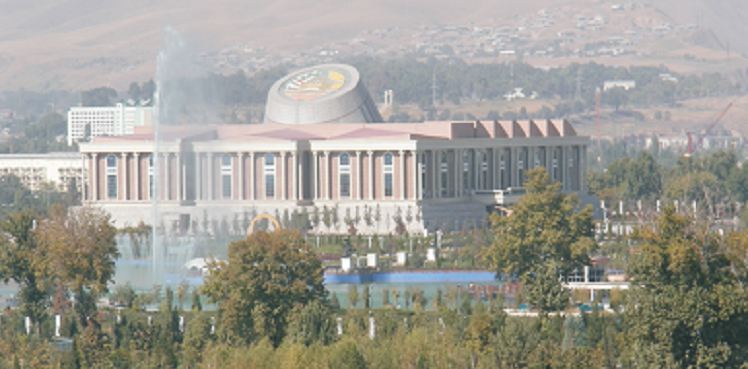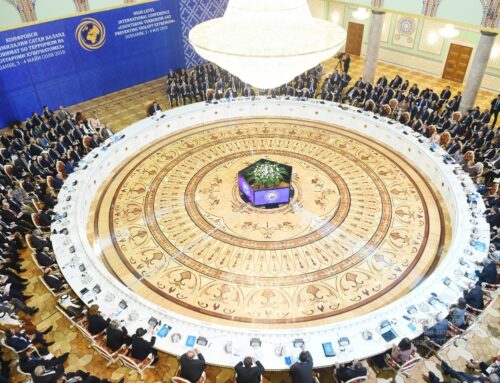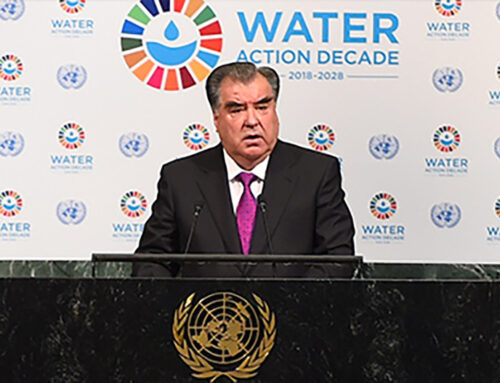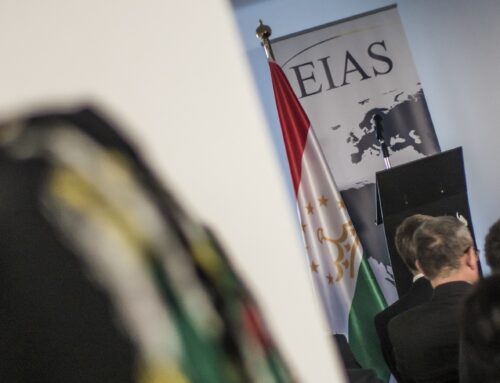
Since its independence in 1991, the Republic of Tajikistan has come a long way. It overcame the initial political and ethnic turmoil and created a stable political and economic system, allowing the country to invest heavily in its economic and cultural development. The capital Dushanbe is rapidly changing. Modern city planning and new architectural concepts are introduced and the centre is being transformed into a spacious and green urban environment. The recently finished National Library and its neighbour, the National Museum, symbolize this new momentum. The museum combines the archaeological finds, the art collections and the geological and natural history collections in one spacious building. It is a must for anyone interested in Central Asia. Among its cultural highlights are 7th-8th century wall paintings and wooden sculptures from Pendjikent, one of the main urban centres on the ancient Silk Road. A spectacular exhibit is the 12m long reclining Buddha entering Nirvana from the Adjina Teppa Monastery in southern Tajikistan. Apart from the Zoroastrian and Buddhist heritage, the Islamic era is documented in all its variety. Noteworthy are a 9th-10th century wooden mihrab with Kufi inscriptions, decorative stuccos from Hulbuk, and selected pottery, metal ware and musical instruments from various sites and periods.

The country’s main economic activities, such as the cotton production and aluminium industry, rely heavily on an efficient infrastructure and on the availability of water and energy. A network of roads and railway connections is under development and tunnels like Shahristan Tunnel finished in 2012, turn Tajikistan into an efficient and fast transit country on the road from Asia to Europe. The Rogun dam and similar ambitious projects for hydroelectric power plants are not only lifelines for industry but also bring electrification to the more remote parts of the country. The exploitation of mineral resources and raw materials are a natural next step in the country’s economic development.
In the wake of this rapid economic development, new opportunities for archaeological research and tourism are being created. Much of the mountain areas still remain archaeologically unexplored or are only superficially known. The development of infrastructure opens up regions for research by Tajik scholars, often working together with international teams. One such example is the discovery of Karon, a site in the Darvaz region, overlooking the border river with Afghanistan.

During a recent visit to Karon, I was able to see firsthand the magnitude of the site that was discovered only a year ago by Dr. Yusuf Yakubov of the Academy of Sciences of Tajikistan. He and his team, among them Dr. A. Nikitin of the Hermitage Museum at St-Petersburg, have just finished their second excavation campaign. The site has a long history and was already occupied during the Bronze Age in the 3rd/2nd millennium B.C. It was a large walled area with several buildings and edifices. The central building, possibly a Zoroastrian fire temple or a small palace, is still in the process of being excavated. Some sherds and a Kushan coin found in the rubble, confirm an early date for this enigmatic building that was restored and changed over the centuries. A large terraced construction is another feature under investigation. On one of the peaks, a small Timurid palace was discovered, next to an industrial area where iron smelting took place and remains of dwellings. Karon holds many answers on the history of Darvaz and Tajikistan and will be the focal point of many archaeologists for years to come. The site has received official recognition by a visit of Tajikistan’s president Emomali Rahmon on 8th October and will undoubtedly become the regional tourist attraction. Local authorities have constructed an access road to the site – it used to be accessible only on foot or horseback – and a small museum with lodgings and study facilities for visiting scholars is planned. Karon will become one of these archaeological sites in Tajikistan that will make the list of sites to visit, like Pendjikent, Hulbuk, Hissar and others. Tourists interested in nature and the unspoiled landscape of mainly the Pamirs, may have to consider also visiting Darvaz region. The authenticity and hospitality of its people, the wild beauty of its surroundings, it all makes a lasting impression on anyone who has the opportunity to visit, including scholars and tourists from the countries of the European Union.




